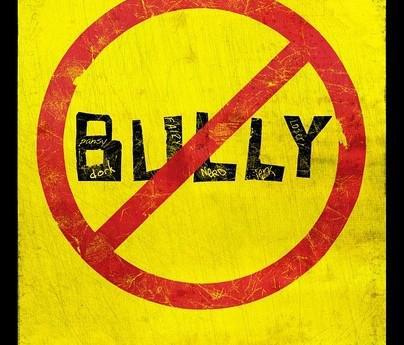
More than 13 million American children will be bullied this year, claim the Bully Project, the makers of the recent documentary opening in a few theatres in Los Angeles and New York on 30 March. Two of the boys featured in this documentary, Tyler Long and Ty Smalley, are already dead, driven to suicide by bullies before filming began.
While it’s difficult to say whether the bullying problem in America is actually getting worse, it’s bad enough that campaigners are actively agitating for schools and communities to do more to combat the problem. And Bully captures that movement.
Filmmakers Lee Hirsch and Cynthia Lowen document the experiences of Alex, a 12-year-old Sioux City, Iowa boy whose curved upper lip earned him the name “Fish Face”; Kelby, a 16-year-old Tuttle, Oklahoma girl who has become a pariah in her small town after coming out as a lesbian; Ja’Meya, a 14-year-old African-American girl from Yazoo, Mississippi facing multiple felony charges after she waved a loaded gun at a school bus full of her tormenters; the parents of Tyler Long, a 17-year-old Georgia boy who hanged himself after years of abuse; and the parents of Ty Smalley, an 11-year-old boy from Oklahoma who also killed himself.
The film is part of a larger campaign to end bullying in American schools and culture, but the question remains, can it? Especially when, as some critics have pointed out, it offers a rather one-sided examination of bullying?
R rating ensures that no one will see it. Though the film is being distributed by the Weinstein Company and is being championed by several celebrities, a Motion Picture Association of America rating of R, for the use of the “f-word”, will likely mean that too few people see it. Michigan teen Katy Butler, who had a finger broken by kids when she was in middle school, started a petition on Change.org to get the rating changed, and nearly half a million peopled signed it. She wrote: “I can’t believe the MPAA is blocking millions of teenagers from seeing a movie that could change — and, in some cases, save — their lives. Think of how many of these kids could benefit from seeing this film, especially if it is shown in schools?” David Denby castigated the MPAA’s decision in The New Yorker, arguing that it “has effectively destroyed the possibility that the picture will do any good.”
“With the stated goal of not offending anybody, the MPAA has essentially told the bullied teens in the movie and outside it — gay and lesbian kids, autistic kids, disabled kids, fat kids and nerds and Goths and plain old weird kids who don’t fit in — that their very existence is too upsetting for normal kids to see, and they should crawl back under their rocks,” wrote Andrew O’ Herhir at Salon.
Required viewing? Marshall Fine in the Huffington Post called Bully “an important and powerful film, one that should be required viewing for kids of any age — and their parents,” because it will give them “access to raw reality.” For David Edelstein on Vulture, this “wildly effective”, “painfully earnest plea on behalf of persecuted children should be seen by kids above all.”
Schools epically ineffective. The most depressing part of the film, according to Fine in the Huffington Post, was “the inability of the schools to find an effective method to stop the abuse.” David Fear described the Iowa principal as “epically ineffective” in Time Out New York and Andrew O’ Herhir noted in Salon that although “no one in Bully makes the case that standing up to attackers ‘builds character’ or that tattletales are wusses… school administrators… profess concern but remind us that ‘kids will be kids.’”
Inspirational – or infomercial? Bully certainly “wastes no time” in trying to convince viewers “that something has to change” observes Kalvin Henely in Slant Magazine, with “a wallop of an opening that shows two bereaved parents standing by the gravestone of their deceased son.” David Fear found this all a bit much in Time Out New York, getting a “sneaking suspicion” that he’s been watching “an extended PSA [Public Service Announcement] for the grassroots organization,” dubbing it “the artiest infomercial ever.”
Too one-sided. Not all critics agreed that the film did a good enough job exploring the real problem of bullying. Kalvin Henely of Slant Magazine worried that the film “never ventures to the other side to hear from those inflicting all this suffering, leaving us moved by poignant scenes of victims’ shattered lives, but, for reasons unclear, keeping the bullies themselves largely out of our reach.” Marshall Fine also noted “the apparent absence of the parents of bullies in the process” in the Huffington Post.
Too rural, red state. Bully “doesn’t take in a wide enough sample of the population, limiting its coverage to cases east of Tuttle, Oklahoma (and no urban areas), a small range of socioeconomic backgrounds, and only two races (four white, one black). Is this really what ’13 million kids [who] will be bullied in the U.S. this year,’ as the film tells us, look like in the 21st century?” asked Henely in Slant Magazine. Fear in Time Out New York commented that the film only showed “Middle America…such things happening in, say, Los Angeles or the Bronx are apparently the subject of another movie,” while@ktranell tweeted that she was disappointed that bullying is painted “as rural, red-state problem. Ugh.”
Bully is due to open on 30 March in cinemas in LA and New York. It does not yet have a UK release date and does not appear to have been rated by the British Board of Film Classification.
More on film
- The Hunger Games: After Harry Potter and Twilight, is this the next big teen movie franchise?
- John Carter
- Bel Ami
- Project X

